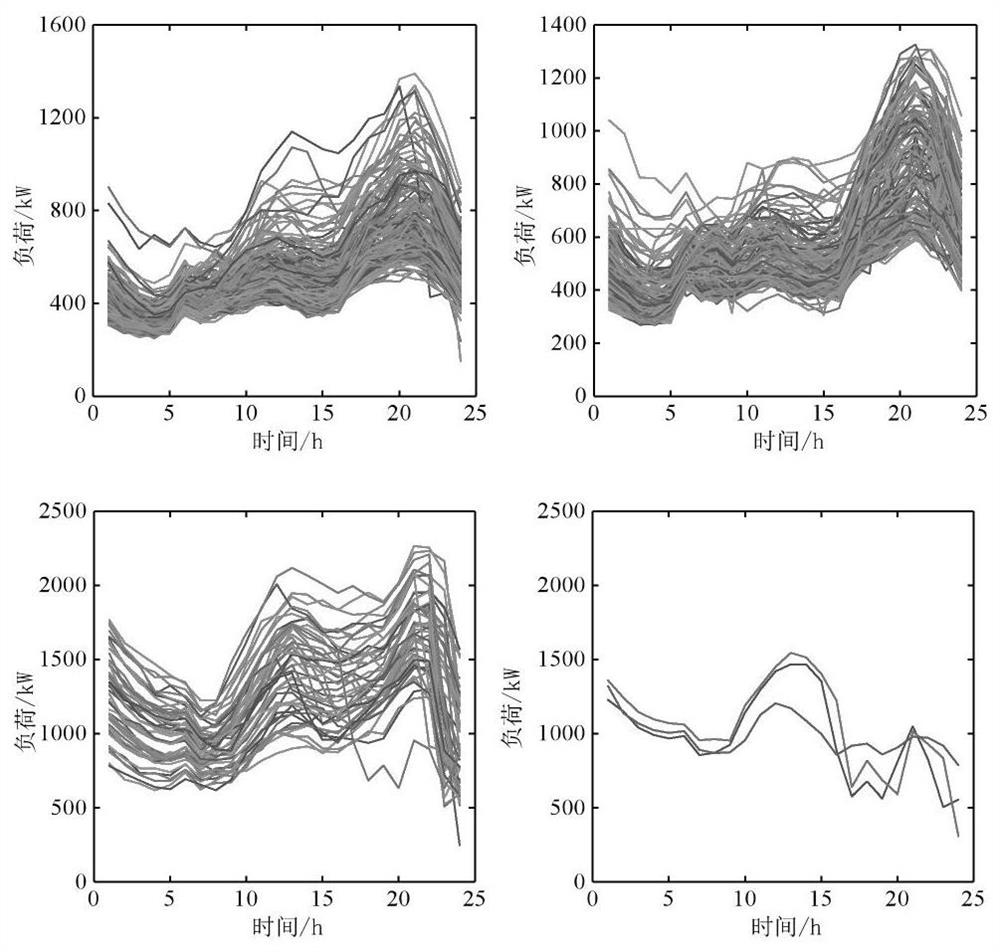Fine classification and prediction method and system for resident electric load mode
A technology for residential electricity consumption and load patterns, which is used in forecasting, character and pattern recognition, and data processing applications. , can not accurately identify and other problems
- Summary
- Abstract
- Description
- Claims
- Application Information
AI Technical Summary
Problems solved by technology
Method used
Image
Examples
Embodiment 1
[0063] refer to figure 1 , which is a schematic diagram of the overall process of a fine classification and prediction method for residential electricity load patterns proposed in this embodiment, including the following steps,
[0064] S1: Collect residents' electricity load data and weather data.
[0065] When collecting data, it not only includes the daily load data of residents, but also combines its corresponding daily meteorological characteristics. Among them, the electricity load data of residents can be obtained through channels such as power company statistics, such as through residents’ electric meters, and weather data can be obtained through data released by the Meteorological Bureau, such as weather websites. The amount of data collected in this embodiment is 1 year .
[0066] The collected weather data includes data of maximum temperature, minimum temperature, average temperature, pressure, humidity, wind direction, rain and wind speed indicators.
[0067] S2...
Embodiment 2
[0134] refer to Figure 8 The illustration is a schematic diagram of the structure of a fine classification and prediction system for residential electricity load patterns proposed in this embodiment. The fine classification and prediction method for residential electricity load patterns proposed in the above embodiments can rely on this implementation Realization of fine classification and forecasting system for residential electricity load patterns. The system includes a collection module 100, a screening module 200, a cluster analysis module 300 and a prediction module 400, wherein the collection module 100 is used to collect power load data and weather data; the screening module 200 can screen the collected data; The class analysis module 300 clusters the filtered data; the prediction module 400 analyzes the input data to obtain a prediction result.
[0135] Specifically, the collection module 100 is used to obtain electricity load data and corresponding weather data for ...
PUM
 Login to View More
Login to View More Abstract
Description
Claims
Application Information
 Login to View More
Login to View More - R&D
- Intellectual Property
- Life Sciences
- Materials
- Tech Scout
- Unparalleled Data Quality
- Higher Quality Content
- 60% Fewer Hallucinations
Browse by: Latest US Patents, China's latest patents, Technical Efficacy Thesaurus, Application Domain, Technology Topic, Popular Technical Reports.
© 2025 PatSnap. All rights reserved.Legal|Privacy policy|Modern Slavery Act Transparency Statement|Sitemap|About US| Contact US: help@patsnap.com



